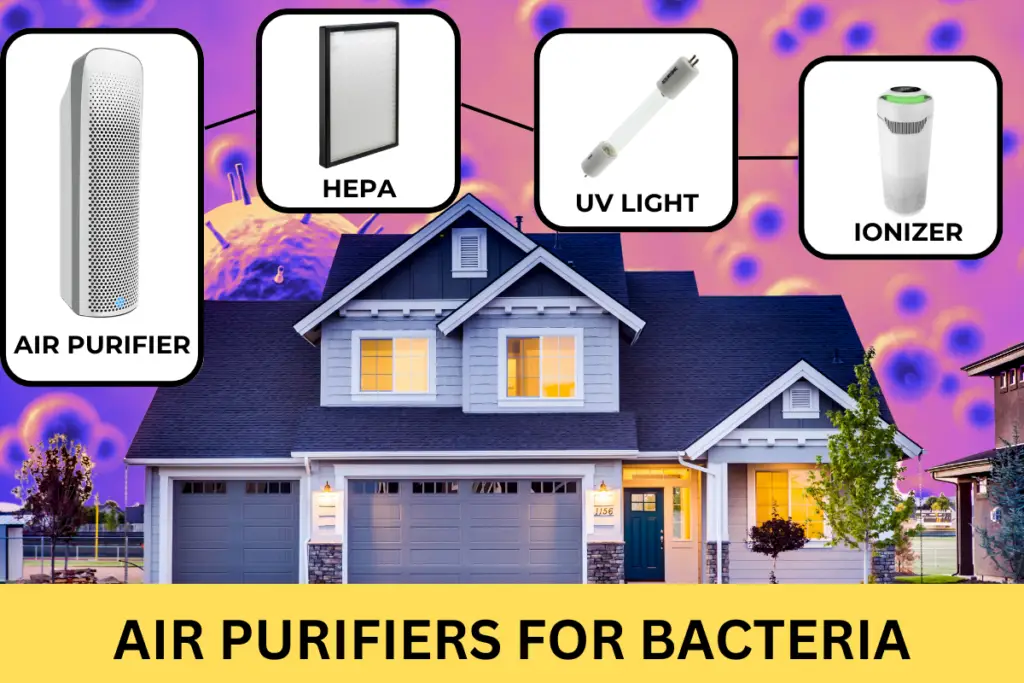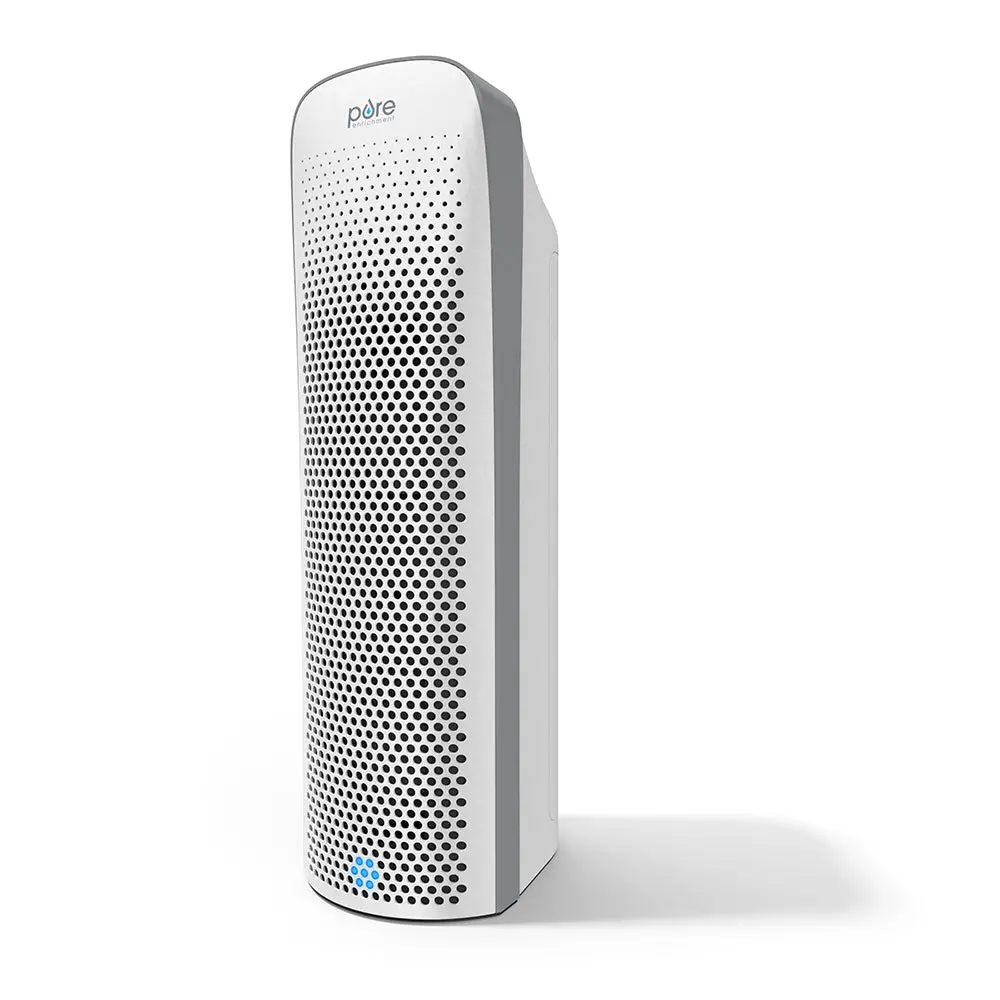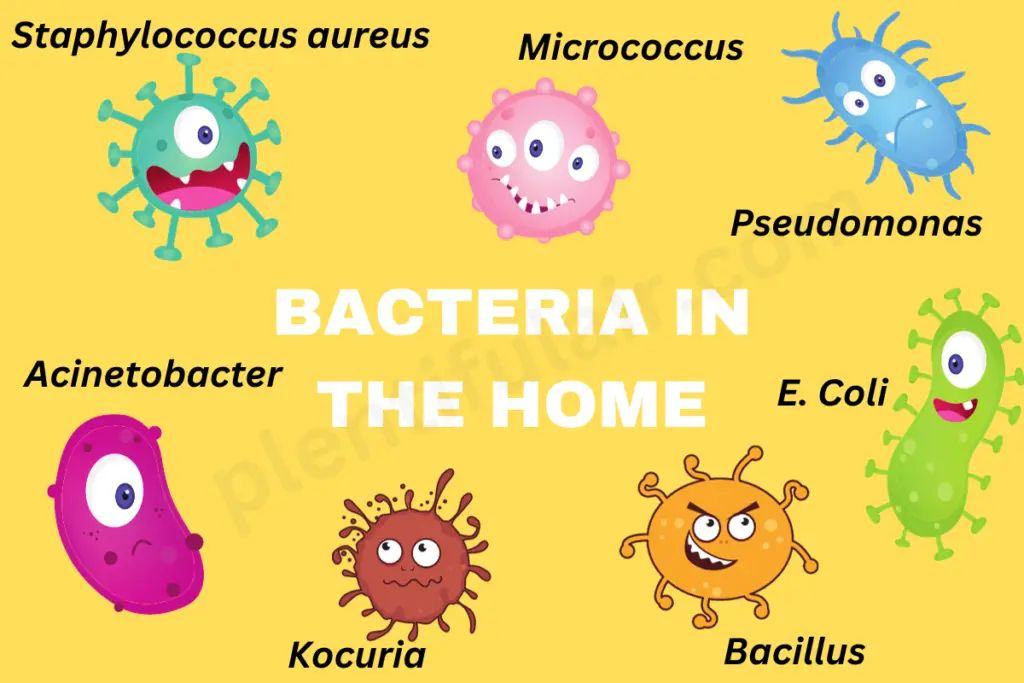Airborne bacteria are a major concern for most of us, for both health and economic reasons (especially if we end up needing time off work). Unfortunately, only certain types of air purifiers can reduce the amount of bacteria in our homes.
Air purifiers that use ozone generation can kill bacteria, while those that emit UV radiation (in a germicidal wavelength) mutate and disable bacterial genes. Units with HEPA filters trap and remove microscopic germs from the air. Air purifiers that use a combination of HEPA filters and UV light are the best option for removing airborne bacteria.
This article explains what bacteria are, which of them are likely to exist in your home, and of course which air purifiers remove bacteria from the air (and how they do it).
How Air Purifiers Remove Bacteria
There are different categories of air purifiers, and each has a different combination of filters or air purification methods.
An air purifier can be effective against bacteria if it has filters with a pore size similar to a microbe or a UV bulb that can inactivate pathogens.
Not all air purifiers are capable of removing bacteria, but some can inactivate or kill up to 99% of germs.
Before purchasing an air purifier, you can check the product description for these components to make sure it can trap or kill bacteria:
HEPA Filter
A HEPA filter is a High-Efficiency Particulate Air Filter with tiny pores that can trap particles as small as 0.3 microns. Its brilliant capability to trap tiny particles guarantees more than 99.97% removal of dust, pollens, pollutants and bacteria that are larger than this size.
On average, bacterial size ranges between 0.4 to 3 cubic micrometers. This means you can trust HEPA air purifiers to remove the majority of microbes.
There are also many subtypes of HEPA filters, the most efficient are medical-grade HEPA 13 (removes 99.95% particles) and HEPA 14 (traps 99.995% particles). They provide the highest tier of filtration and can filter various particles like pet hair, dander, debris, odor molecules, bacteria and viruses as small as 0.1 microns.
So if you are looking to buy a HEPA air purifier, we recommend choosing one that comes with at least a HEPA 13 (H13) or True HEPA filter, and preferably a HEPA 14 (H14) filter.
Remember that HEPA filters do not kill or inactivate bacteria. Instead, they only trap the germs in the pore space. This means if the air purifier isn’t cleaned regularly, the filter can become saturated with bacteria, allowing some of them to escape out of the system and back into your home.
For this reason it’s also important to wear a mask when cleaning your purifier or changing the filters. We also recommend doing this outside if possible, so that the contaminants cannot be released into your home by accident.
UV Lights
UV filters are actually bulbs (not filters at all) that emit UV rays of a specific wavelength, which effectively inactivates molds, bacteria, and viruses. UV light is a known germicide and is vastly used for disinfection in both air and water.
Here’s how UV light rays work against bacteria:
- The electromagnetic rays target the genetic material (DNA and RNA) of microbes
- The resultant photochemical reactions disable the reproduction and normal growth of the germs
- The rays also cause mutations that permanently inactivate the microbes
Many air purifiers have UV light bulbs installed that produce UV light. Short wavelengths of UV light can considerably damage bacteria, disabling many of its functions. In comparison, broad-spectrum UV rays can kill pathogens.
You cannot rely only on UV light bulbs for disinfection as they are only effective in high doses and require a set of other filters to efficiently remove a significant number of bacteria from the air.
Ozone Generation
Ozone air purifiers do not have filters and depend solely on ozone generation for air sanitization.
These machines produce ozone gas in a safe range. Ozone is unstable and highly reactive and readily reacts with surrounding molecules by oxidizing them.
This chemical reaction changes the composition of contaminants, making the germs harmless.
There are two types of ozone generators:
- Corona discharge generators electrically convert oxygen to ozone. They produce much larger concentrations of gas than the UV ozone generators
- UV ozone generators use UV rays to break oxygen molecules to generate ozone
Multiple studies have demonstrated ozone generators can kill bacteria.
Note that ozone is a toxic gas that can potentially be lethal if consumed in high concentrations. An ozone generator should only be used when no-one is present.
Since safer and more efficient alternatives like HEPA air purifiers are now available in the market, it is better (and safer) to use them instead of ozone generators. We do not recommend ozone generators.
Ionizer
Some air purifiers come with an ionizer to increase efficiency. Ionizer releases ions that electrically charge air molecules. Some air purifiers are only ionic, but most of them combine filters and ionizers for disinfection.
While ionizers are not sufficient in killing pathogens on their own, they can help improve the overall efficiency of HEPA filters and UV light bulbs.

How CADR’s relate to bacteria removal
The CADR is a metric on which the strength of an air purifier is measured. The abbreviation stands for Clean Air Delivery Rate and measures the effectiveness of air purifiers in removing contaminants from a certain amount of air.
The three primary pollutants considered for the calculation are pollen, dust, and smoke. It does not take the percentage of bacteria removed into account, however the CADR is a dependable factor in determining the overall efficiency of an air purifier.
Generally, a CADR rating of 60-119 is considered good.
The higher the CADR the more contaminants it can remove, or the faster it can remove them.
Independent testing is used check the impact of an air purification unit on different bacteria instead of CADR. Based on the test results, the EPA (Environmental Protection Agency) issues a certificate to the product that you can see before purchasing it.
Note that the same purifier can have varying efficiency against different bacteria, and all the details are mentioned in the product features. If there is a certain kind of pathogen you are concerned about then check beforehand whether or not the unit has been tested for it.
If you are comparing different air purifiers, then if all else is the same, one with a higher CADR will be more efficient.
Air Purifiers That Remove Bacteria
If you want to invest in air purifier that can remove the most amount of bacteria then we recommend one that has a medical grade H13 or H14 HEPA filter and a broad spectrum UV light. An ionizer is an optional component that can remove slightly more, but is not necessary.
An example of this type of air purifier is the PureZone Elite from Pure Enrichment, although many other brands like Medify and Levoit also have good units.

The PureZone Elite 4 in 1 True HEPA Air Purifier has a medical-grade H13 True HEPA Filter combined with activated carbon, a UV-C light, and Ionizer component.
Independent testing of the PureZone Elite 4 in 1 has showed it can easily remove bacteria, including:
- Staph. albus (96.6%)
- Escherichia coli (99.3%)
- Aspergillus niger (99.6%)
- H1N1 (99.9%)
Read about how long you should leave your air purifier on, here.
How We Are Exposed To Harmful Bacteria In The Home
Bacteria are microorganisms, invisible to the eye, that are found across the Earth.
From thermophilic bacteria that literally survive and grow in hot springs to the psychrophiles that live in the arctic snow, these microbes inhabit all kinds of environments.
Bacteria are also found in our bodies. According to research, bacterial cells outnumber human cells by 10 to 1 in the body.
While often assumed with a negative connotation, most bacteria aren’t harmful. In fact, the ones found in the human body play an important role in digestion and help maintain our reproductive health.
While we know that not all bacteria are inherently dangerous, certain types of them are direct sources of severe diseases. Removing these potentially harmful germs from our immediate environment is important.
There are numerous ways in which bacterial diseases can be transmitted, and one of them is inhalation.
Air is a primary carrier for many pathogens, and a large number of bacteria are airborne. One study indicates a bacterial concentration of almost 0.013 to 1.88 organisms per liter of air.
These bacteria naturally enter the system when inhaled.
Although the three lines of defense, i.e., skin, mucus lining, and immune system, kill many pathogens, some of them are resistant and successfully invade healthy cells, manifesting diseases.
Animals are also a significant source of microbes. Many bacterial infections like salmonellosis, pasteurellosis, etc., are associated with pets.
Common Types Of Bacteria Around The Home

These are the most common types of bacteria found in the homes:
| Bacteria | Sources | Pathogenic Effects |
| Staphylococcus aureus | Soil Water Air Human skin Nasal epithelium | Pneumonia Blood infections Cellulitis Joint problems Can progress to organ failure in extreme cases |
| Micrococcus | Human skin Beer Water Air Dust Soil | Inflammation in brain meninges Arthritis Endocarditis |
| Pseudomonas | Soil Water Food | Skin rash Pain in ears Swelling in eyes Pneumonia |
| E. Coli | Raw or undercooked meat raw milk Contaminated vegetables | Vomiting Bloody diarrhea Stomach cramps |
| Bacillus (tuberculosis) | Air | Weight loss Fever Night sweats Infection in lymph, brain, spinal cord |
The immune system in healthy people is equipped to fight off pathogens. However, an unhealthy lifestyle in conjunction with the unregulated use of antibiotics has made many germs resistant to natural and induced immune responses.
There are also many immunocompromised people, elderly and children, whose health can severely deteriorate as a result of bacterial exposure. Reducing or removing bacteria from our homes can help minimize this risk.
Remember air purifiers with medical-grade H13 or H14 HEPA filters and UV lights are the best way to tackle airborne bacteria in the home, as well as regularly cleaning of course.
